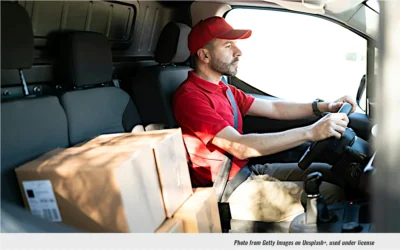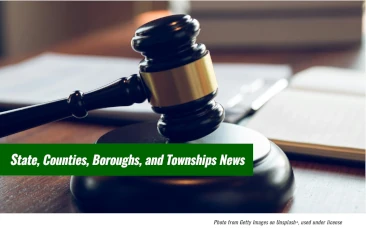By Anthony Hennen | The Center Square
Republished by Travels With The Post
(The Center Square) — It’s a problem seen daily by drivers everywhere in Pottstown or, for that matter, almost any local borough or township. Behind their steering wheels, commuters are craning their necks to see past trucks delivering packages to homes and businesses.
Occasionally drivers also take their lives into their hands to maneuver around delivery vehicles blocking a highway lane. Meanwhile, delivery employees run to nearby doors to drop off packages, potentially endangering themselves amid the moving traffic.
The growth of shipping online packages in Pennsylvania, public officials acknowledge, is putting pressure on the state’s roads and transportation system.
More trucks and home deliveries are crowding city streets and rural interstates. County planning commissions around the state have begun to weigh how they must adapt for the future.
One proposal kicked around in the Pennsylvania Department of Transportation has been a packages tax to replace dwindling gas tax revenue. More goods shipped to a home rather than a business means more wear and tear in residential neighborhoods, along with congestion. A $1 per-shipment fee, PennDOT estimates, would raise almost $800 million in its first year.
Delivery Impact on Local Transportation
“E-commerce has a disproportionate impact on the local transportation system,” PennDOT’s Transportation Advisory Committee noted during a panel discussion held in August. “The local roadway network is now handling a sizable volume of commercial vehicle traffic that in many cases it was not designed to accommodate.”
Zoning and land-use planning may change as well. The panel noted communities will need more public-private collaboration to deal with congestion and sprawl and more truck traffic. They also will likely deal with environmental consequences, like emissions and storm water runoff.
“We should not have a ‘build first, plan later’ approach,” one panelist noted in a summary write-up. Warehouse development and growth, it noted, is “going to be here a long time. We should more adequately fund planning departments locally and statewide, and embed planners within PennDOT.”
The growth of warehousing has turned portions of the Lehigh Valley, for example, into a boom town. Every state, however, faces similar transportation challenges.
In Washington state, leaders are considering a retail delivery fee like Pennsylvania. Colorado and Minnesota already have a fee in place. A handful of other states are kicking around ideas to find more revenue to pay for road upkeep.
Related Questions About Housing
The growing pains of online shopping don’t only affect roads, bridges, and public transportation. As in many other areas, Pennsylvania is haunted by questions about housing.
“In many instances, the housing for workers at e-commerce facilities is not adjacent to where they work. Typically, when employees head in for their 12-hour shift they are traveling 45 minutes or more to their worksite and back,” the panel summary noted.
“This extended workday has huge impacts on the rearing of their children and quality of life. What should be done to push for more housing convenient to these facilities, which are typically located in rural, low-density areas?,” it asked.
Photo from Getty Images on Unsplash+, used by Travels With The Post under license
The Center Square is part of a network of U.S.-based newsrooms that report on state- and local-level government activity. Travels With The Post republishes news articles from its Pennsylvania edition. Find other articles here.


 After Surgery, Feel Better Quicker. Turn on Your Music!
After Surgery, Feel Better Quicker. Turn on Your Music!